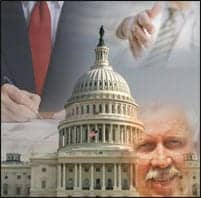President-elect Michael Silber, MBChB, took the reins of the
The brief ceremony included the passing of the AASM president’s engraved baton and gavel to Silber, and, in return, Silber presented Epstein with a symbolic silver gavel, a Los Angeles Lakers basketball jersey, and a plaque. “The Academy has been very fortunate to have had a leader of Dr. Epstein’s caliber at such a critical time,” Silber said.
In his remarks, Silber promised to use his 1-year tenure as AASM president to build on the work Epstein had done, especially in regard to having sleep medicine increasingly recognized as an independent subspecialty. During Epstein’s tenure, both the Centers of Medicare and Medicaid Services (CMS) and the American Board of Medical Specialties recognized sleep medicine as such.
However, Silber also promised some bold new leadership. He is launching an initiative to try to have sleep medicine taught in all medical schools, and he planned to take a leadership role in the controversial area of portable monitoring. “We hope to provide an objective and unbiased approach to this topic,” he said. At present, the AASM does not recommend portable monitoring in place of laboratory polysomnograms for sleep disorder testing.
Finally, he said he would continue to push insurers to link reimbursement to sleep center accreditation, specifically AASM accreditation. Currently, the AASM accredits 998 sleep centers, according to Kathleen McCann its media relations coordinator. However, this is likely only a percentage of the total number of sleep centers nationwide. A 5-year-old study by David P. White, MD, and colleagues estimated that in 2001 there were around 1,300 sleep centers in the United States and, because sleep medicine has experienced double-digit growth each year for several years now, this number is likely much larger today.




